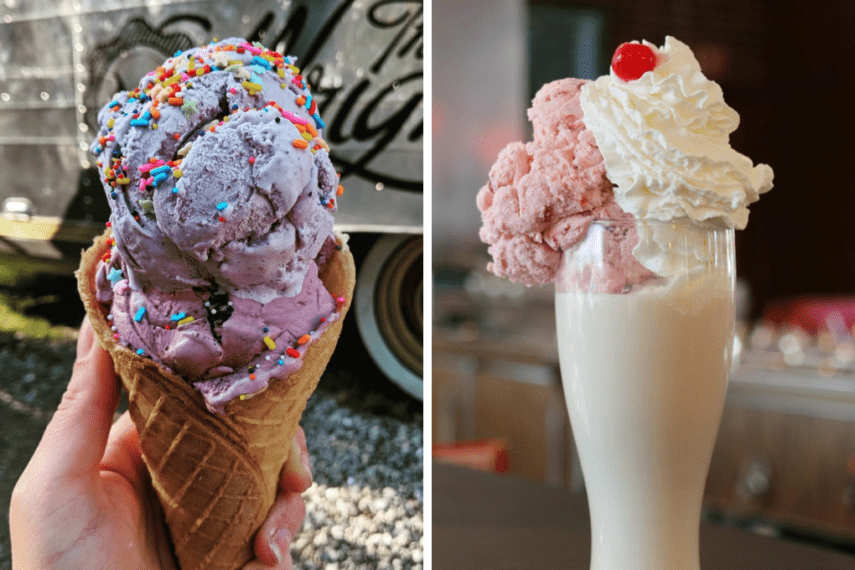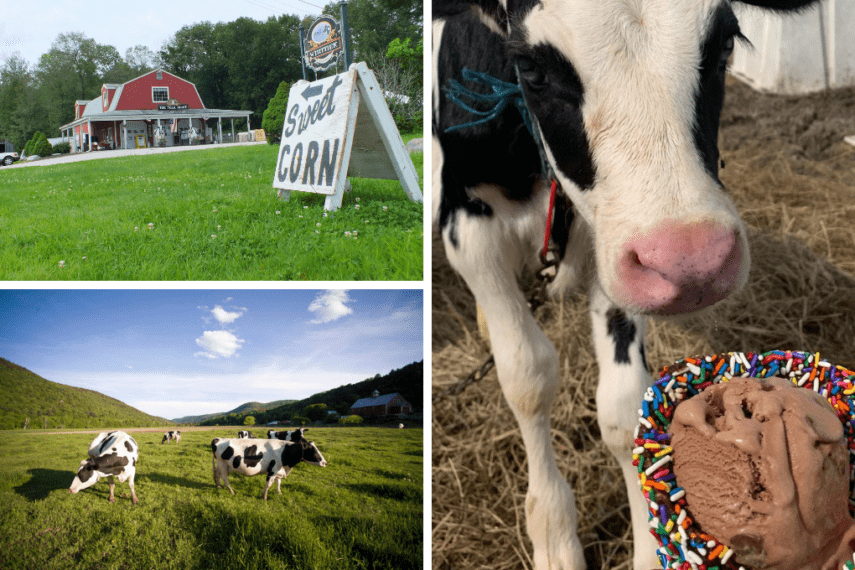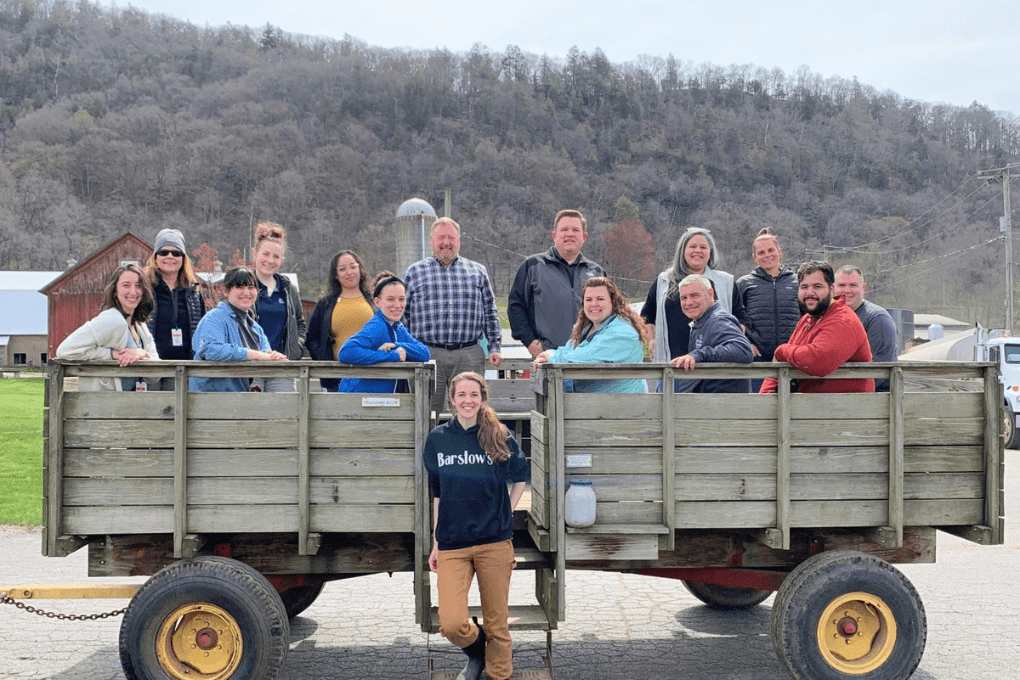
Visiting Barstow’s Longview Dairy Farm and Bakery transformed my perspective on what “local” really means, not only as a former Springfield Public Schools student, but now as a student advocate and proponent of healthy, happy animals.
Growing Up in the City
Dairy is a timely topic on the minds of students today and stands, sometimes, as a touchy subject for those with special dietary needs or lifestyle adjustments. I grew up with heightened scrutiny around dairy products and an assumption that dairy farms were miles out of reach. I recall many students opting out of taking milk with their school lunch because they felt it was touched by too many hands before it was offered in the cafeteria.
Springfield, MA has been my home my entire life. Born and raised in a bustling city, farms aren’t places I frequented or even took an interest in growing up. I didn’t feel concerned with where my food was coming from because my community seemed far removed from farmland. What I did grow concerned with, however, was food insecurity and sustainability in my city.
There were instances in my life when certain foods or products weren’t affordable, and our family opted for less nutritious and less expensive foods. Although our family income fluctuated as our lives evolved, milk was one thing that was always in our fridge. My mother started each meal with the famous question: “Milk or water?”
Students in cities like mine can understandably feel disconnected from local agriculture because they don’t have direct exposure to the farms and people producing their food. It’s hard to take an active role in school food as a student when you don’t know where it’s coming from.
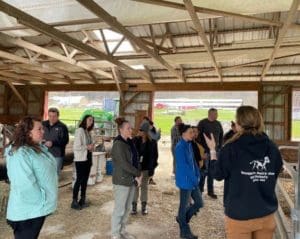 Today, as a proud graduate of Springfield Public Schools, I serve not only as a mentor to students in my community, but also as a professional surrounded by individuals dedicated to increasing the quality, sustainability, and efficiency of child nutrition programs. Together with my colleagues, we make up Home Grown Springfield, championing nutritious school meals as the Culinary and Nutrition Program of Springfield Public Schools.
Today, as a proud graduate of Springfield Public Schools, I serve not only as a mentor to students in my community, but also as a professional surrounded by individuals dedicated to increasing the quality, sustainability, and efficiency of child nutrition programs. Together with my colleagues, we make up Home Grown Springfield, championing nutritious school meals as the Culinary and Nutrition Program of Springfield Public Schools.
Part of Home Grown Springfield’s mission is to increase access to student learning opportunities and to commit to being transparent with our students. The more familiar students get with local foods in school, the more likely they’ll opt for them in the cafeteria and the future.
Visiting the Cows
I was immediately impressed by the care and love given to the cows at Barstow’s Longview Dairy Farm and Bakery. They have ample living space and advanced technology to help everyone get fed and milked accordingly. Staff members name all their “ladies” (as they fondly referred to them during the tour) and speak lovingly of their herd.
Denise Barstow Manz is a seventh-generation Barstow, helping run the farm and dairy store in Hadley, MA. The milk from the cows at Barstow’s goes to Cabot Creamery Cooperative to be made into cheese, butter, and other dairy products.
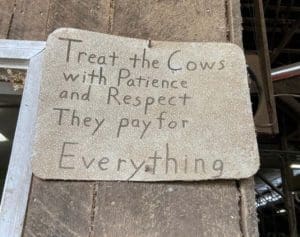
There’s no guessing here. All the ladies have ID tags that are scanned upon each visit to feed or milk. The equipment populates their profiles to show each cow and their preferences, how much to feed and milk them, and it even takes their vitals. Denise said the robotic feeding systems can feed each cow exact amounts, so all are properly nourished on their own time. Now, there’s less need for scheduled feeding times (and less hungry ladies).
When it comes to milking, the robotic equipment seems large when standing inside it, but compact compared to the amount of space in the barn. Denise mentioned that a quiet barn is a happy barn. The ladies are comfortable enough with the equipment to self-regulate, hopping in the milking machine when they’re ready to be milked. Like the feeding system, this technology allows for a more comfortable herd at all times of the day. The robotic milker cleans each udder before milking, self-sanitizes after each visit, and measures each yield so the Barstow’s team can track production and troubleshoot any concerns.
A colleague of mine who also grew up and lives in Springfield, Rebecca Irizarry, marked this as the highlight of her visit, saying “I never put much thought into the responsibilities of running a dairy farm. We learned so much. My highlight was seeing how the cows are milked and how each one knows how to adapt to the technology.”
Waste NOT!
I was surprised to learn that the food waste Home Grown Springfield produces is sent to Barstow’s anaerobic digester, where waste is converted to energy to help power 1,600 homes in the area. Denise explained that the Barstow family, who lives on the farm, can heat their homes for free because of the anaerobic digester’s capabilities.
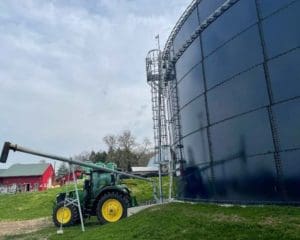
Julia Thomas, a FoodCorps service member that also works alongside me, recalled byproducts from the digestor are used as fertilizer across the farm, completing the cycle and reinforcing Barstow’s commitment to “continue forward.”
Students today focus a lot on where they’re getting their meals and how organizations like Home Grown Springfield work to conserve energy and reduce waste. After learning about Barstow’s initiatives to help our community do so, I feel empowered to share their story with the students of Springfield.
The Barstow team makes every effort to create efficient and sustainable processes that keep their cows happy and their community healthy. Visiting Barstow’s transformed my perspective on what “local” really means, not only as a former Springfield student, but now as a student advocate and proponent of healthy, happy animals. I’m excited to bring the knowledge I learned back to the students of Springfield and help enhance their awareness of this local and sustainable food system.

